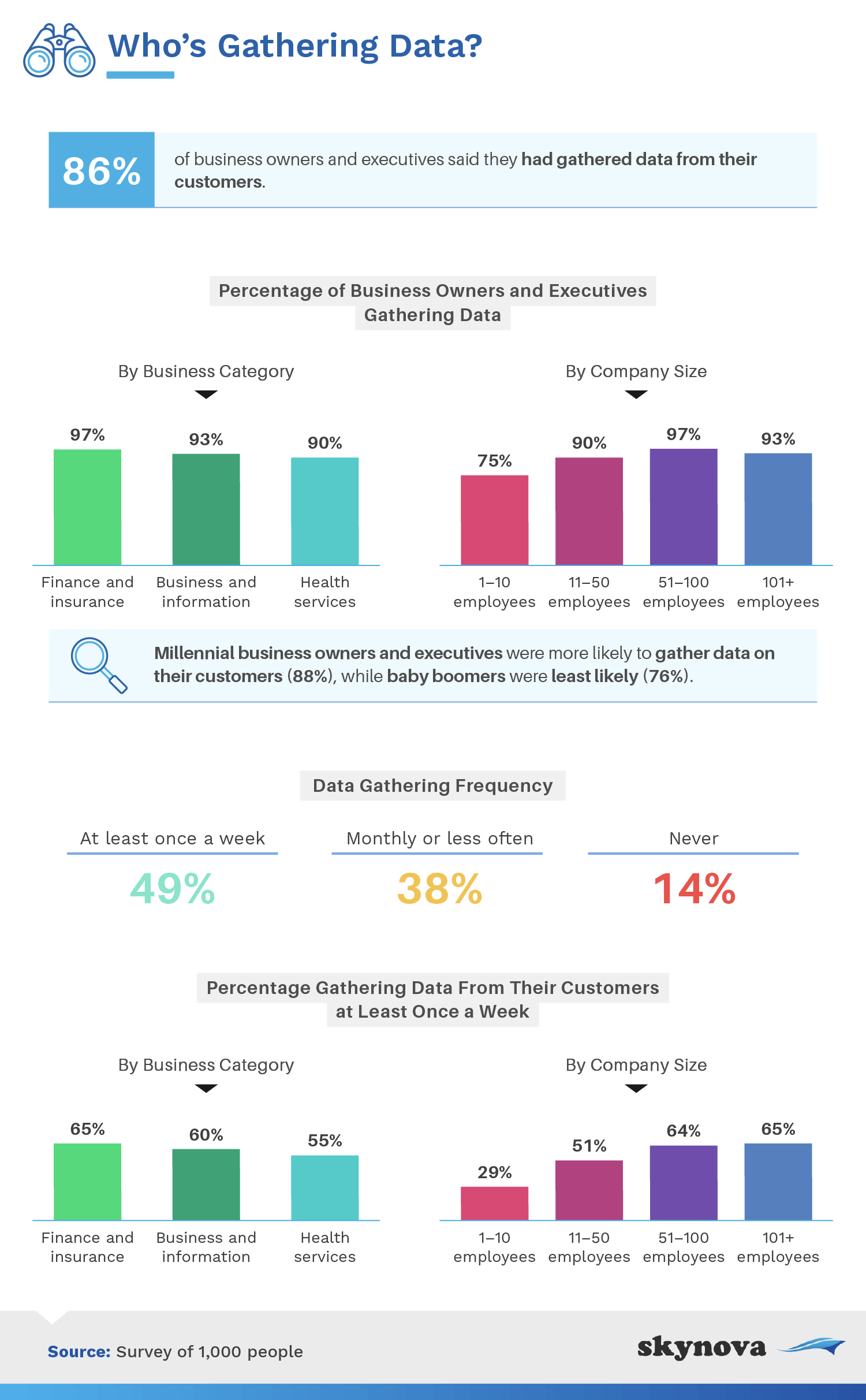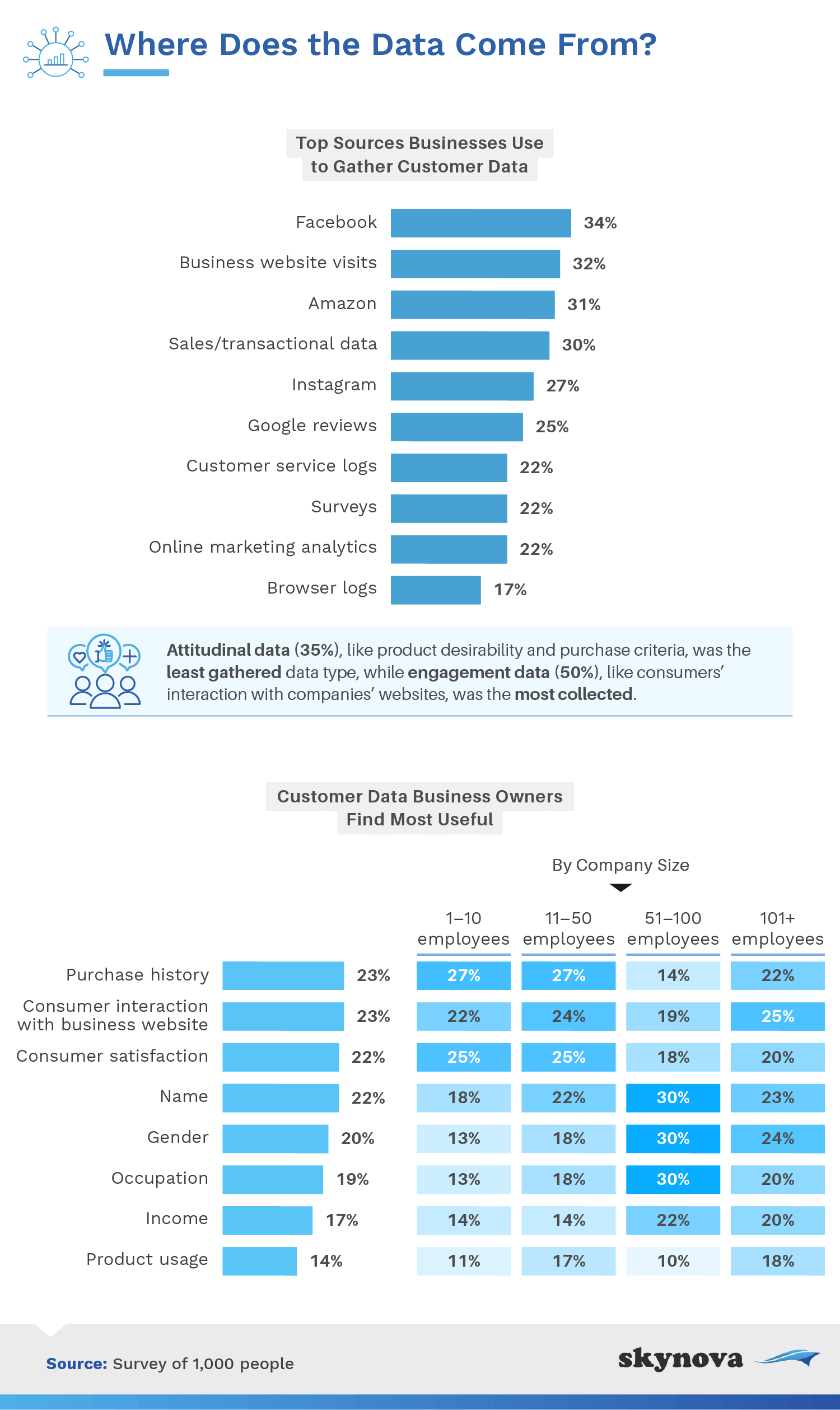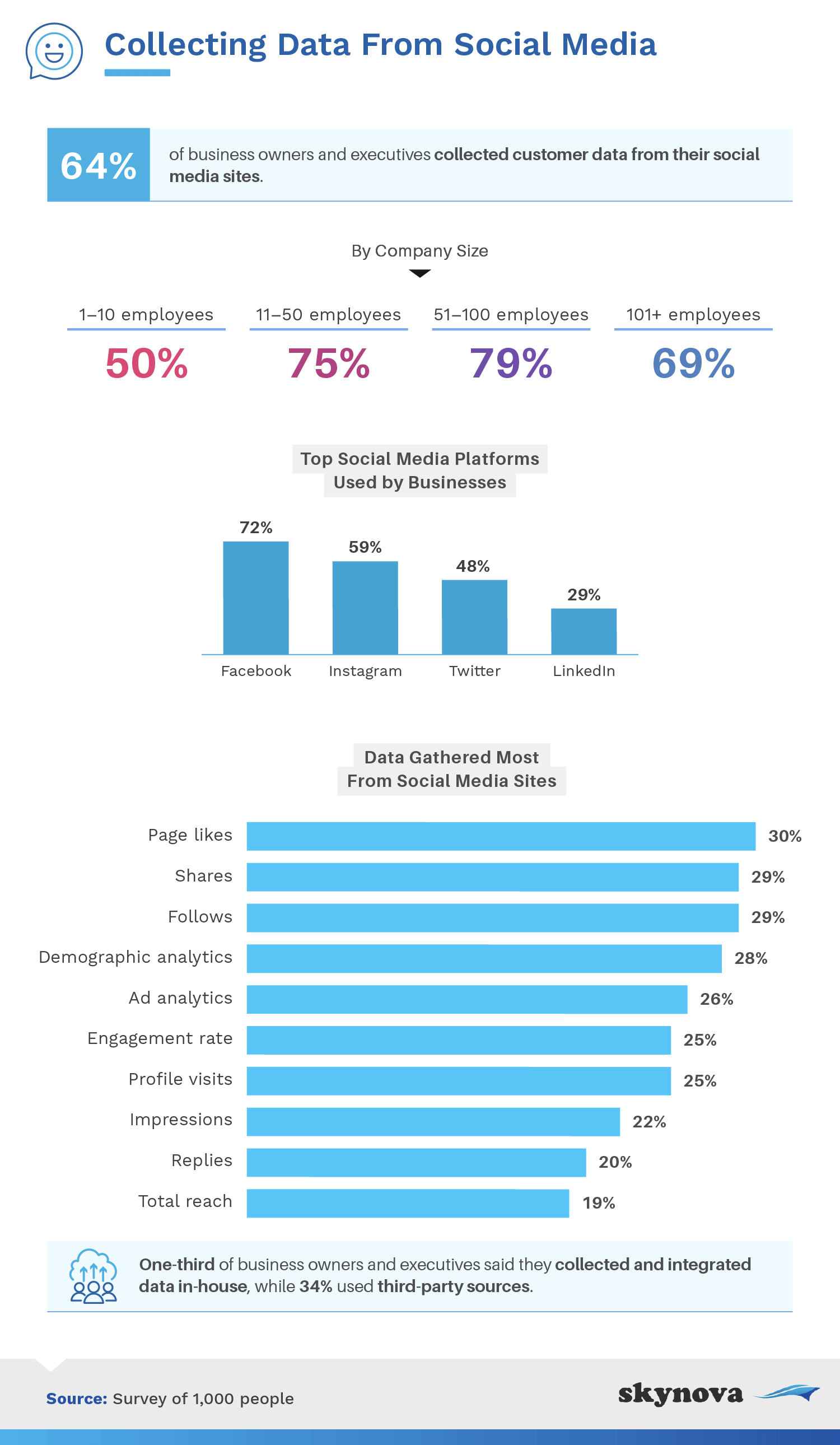
|
Starting up a small business is challenging, and growing it is even harder (considering the number of them that never end up taking off). But what if there was a way to give yourself the best chance at success? Well, that’s where data collection comes into the picture. We’ve surveyed 1,000 business owners and executives to learn more about their approach to data collection and their general take on the subject.
We’ll take a closer look at some variables, like business category and company size, to determine if some businesses are collecting data more than others. Also, what are the top sources they use to gather it? And when they get it, how are they putting it to good use? Read on to find out more!
For one reason or another, 86% of business owners said they’ve gathered data from their customers. The top three industries where this was most common were the finance and insurance, business and information, and health services sectors. By company size, businesses employing anywhere between 51 to 100 employees gathered data the most. Also, men (90%) were more likely than women (82%) to gather data on their customers.

Small-business owners preferred to gather data more often than not – nearly half did it once a week, while fewer did it less frequently or not at all. Businesses in the finance and insurance sector, as well as those who had 101 or more employees, were the most active with their data collection. Small microcompanies with 10 or fewer people were behind on the data collection game.
When businesses are looking to gather data, over a third went to Facebook as their primary source. Social media in general was commonly used by business owners, as many also looked to Instagram for valuable data collection.

Aside from external online sources, many companies referenced their own business-related platforms and activities for data. Website visits, sales and transactional data, and customer service logs were popular places to look for relevant facts and figures. Altitudinal data, which is pried from any piece of information that outlines how a customer feels about your company (e.g., a survey), was the least collected type. Meanwhile, engagement data, which involves customer interaction with company websites, was the most collected.
The most useful tidbits of information, according to business owners, were a customer’s purchase history and their interaction with the business website (engagement data). Some companies, especially in the 51 to 100 employee range, were particularly interested in perhaps improving their customer database, as they focused on gathering data like their consumers’ names, gender, and occupation.
As was previously touched on, companies definitely do not discount their social media accounts when it comes to data collection. In fact, 64% of business owners and executives had done it before, most of who ran companies of 51 to 100 people.

Facebook and Instagram were the top two most checked out accounts, but Twitter and LinkedIn were definitely reviewed often as well. While scouring them for data, companies collected information related to page likes, shares, and follows the most. Social media data collection plays an especially important role in optimizing a company’s marketing strategy – from it, you can better optimize your social content, update your SEO strategies (which are crucial in the social media world), monitor your brand image, and start targeting influencers to help promote your offering.
A third of companies did all the legwork themselves, but 34% opted to bring in a third-party company for data collection and integration-related labor.
We know that businesses are making an effort to gather useful data, but what are they actually doing with it? Well, as mentioned, a lot are improving their product or service offering based on the results they’re getting from collection. From the findings, many can also identify what kind of customers they should be targeting, and make the necessary business moves to maintain current ones. Other ways data collection was used was to improve more marketing-, operations-, finance-, efficiency-, and industry-related facets of the business.

Generally, it seemed as if businesses in better financial standings were more likely to use data for business decisions – companies with more positive financial outlooks, greater expected business sale rates compared to the previous year, and operating revenues of $200,001 or more incorporated their data into their plans the most. The three most common reasons that prevented companies from gathering more data were the time it would take, privacy concerns associated with it, and the upfront costs of the operation. A quarter of microbusinesses (1 to 10 employees) didn’t gather data because of being unsure if it was useful, and 40% cited a lack of time as their reason.
Data collection is clearly beneficial, even if extra resources are needed to implement it. To choose the best method for the company, business owners should define what they want to learn and what questions they want to get answered, determine whom they’ll be gathering data from, and outline all of the collection-related costs and capacity of the project.
Almost half of the surveyed business owners and executives said that they collect data at least once a week, and the more people a company employed, the higher chance that this was the case, too. Many companies checked out their social media pages for valuable data, as well as their own website and online databases (e.g., website visits, sales data, customer service logs). They specifically found data pertaining to purchase history, consumer website interactions, and consumer satisfaction the most useful.
More on social media, companies prioritized information like page likes, shares, and followers to analyze further – staying ahead in the social media game is crucial nowadays, and social data collection allows for improved marketing strategies and consumer satisfaction. Collection generally opens the door for product or service improvements and identifying and maintaining new customers, among other benefits. While some companies avoid using data collection strategies for one reason or another, the positive results they can bring to a business are undeniable.
Skynova’s online invoicing software allows small businesses to operate with more efficiency, speed, and organization. We also enjoy writing about topics that we find exciting and that we hope you enjoy as well. They will usually take on a business or workplace angle and intersect with another aspect of society (in this case, small businesses and data collection). All of our articles use both primary and secondary sources to establish our findings and then elaborate on them to the best of our ability.
We surveyed 1,000 business owners and high-level executives to explore who is gathering data and how they are using it. Among them, 56% were men, 43% were women, and 1% identified as nonbinary.
For short, open-ended questions, outliers were removed. To help ensure that all respondents took our survey seriously, they were required to identify and correctly answer an attention-check question.
These data rely on self-reporting by the respondents and are only exploratory. Issues with self-reported responses include, but aren’t limited to, exaggeration, selective memory, telescoping, attribution, and bias. All values are based on estimation.
Many small businesses are on the lookout for any and all data that might help their company – the information in this article could be just as useful too! Feel free to share our findings with anyone you’d like but only for noncommercial use, please. We also kindly ask that you provide them with a link back to this page so they have full access to our data and methodologies.